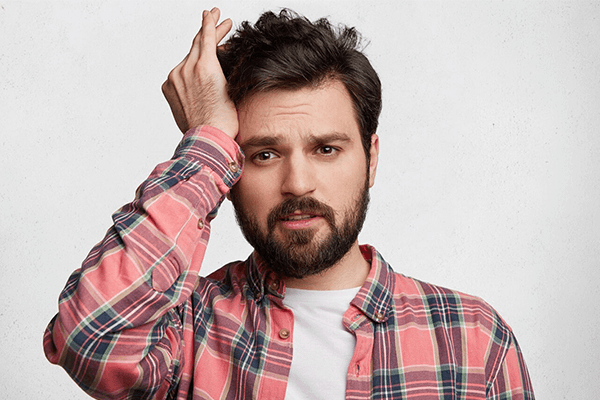
How Many Graft Do I Need for Hair Transplantation
The number of grafts is a very important issue in hair transplantation. The correct and proportional number of grafts should be determined in order to look natural and to camouflage the shedding areas. For this reason, it is necessary to consider certain metrics. In this content we have written, we have prepared for you the answers to all the questions you have in mind, such as what is the number of grafts, how is the number of grafts determined, etc. We wish you all pleasant reading.
What is the Number of Grafts in Hair Transplantation?

In its simplest form, the area where the hair follicles and scalp are located is called a hair graft. The number of grafts is very important for hair transplantation to give the correct and desired results. Because the correctly determined number of grafts allows you to have a perfect appearance in hair transplantation. For this reason, the correct number of grafts should be determined.
The number of grafts, which is very important, is approximately 2-3 hair strands. This number corresponds to approximately 2000 grafts and 4000 to 6000 hair follicles.
How is the Number of Grafts Determined?

When determining the graft in all types of hair transplantation, the scalp and hair follicles of the patient to be transplanted are first analyzed in detail. As a result of this detailed analysis, it is determined how many grafts the patient will need, taking into account the patient’s hair loss rates. The number of grafts needed is determined by the Norwood scale. The Norwood scale, which is very important in terms of hair transplantation, is determined according to the rate of hair loss.
For example; Considering the patient’s hair loss, if the hair loss on the sides has started and the “M” shaped hairline has started to recede backwards, we can say that this patient has hair loss on a 3 Norwood scale. Or, if the person’s front hairline and the back part of the person started to open up, we can say that there is hair loss on a 4 Norwood scale.
While all this scaling is being done, the most important thing to be considered is undoubtedly the shedding rate. For this reason, we strongly recommend that you have a preliminary consultation with a professional hair transplant specialist so that you can achieve healthier and natural looking results.
| 📈Hair Loss Rate | 🔢Number of Grafts to be Transplanted |
| 📈Hair density is present. Hairline regression is not evident | do not need a hair transplant |
| 📈The hairline is slowly receding | 500 to 1500 grafts |
| 📈Hairline regression is marked and progresses towards the back of the head | 1500 to 2000 grafts |
| 📈Hair loss is advanced. | 2000 to 2500 grafts |
| 📈Loss is present both at the hairline and at the back of the hair. | 2800 to 3200 grafts |
| 📈The shedding has progressed to a state of semi-baldness. | 3500 to 4300 grafts |
| 📈Only a few hairs are left. The remaining hair is gathered behind the ear. | 5000 to 6000 grafts |
What Does the Number of Grafts Depend on?
Certain things should be considered when determining the number of grafts. These factors help to get the most natural and accurate results. Therefore, the following factors should be given importance.
Donor Density
Donor density is the most important factor to be considered in hair transplantation. Thanks to the donor density, the density of the person’s hair is determined more easily. For example, if there is a lot of donor hair, the area that can be covered will be more. But on the contrary, if there is less donor hair, the number of grafts needed will be less in parallel.
Scalp Elasticity
The scalp is a factor that determines the quality of the hair transplant. For example, the looser the patient’s scalp, the more grafts are needed and the easier the area to be covered. On the contrary, the tighter the scalp, the fewer grafts are needed and thus the area to be covered is less.
Hair Feature
Patients with good and high-quality hair structure (thick, wavy, light-colored hair) can always give better results than patients with poor hair structure (thin, straight, dark hair). In short, people with thick wavy or light hair need fewer grafts, while dark, straight or thin hair needs more grafts.
Hair Loss Severity
The severity of hair loss plays an important role in determining the number of grafts. For example, the more severe the patient’s hair loss, the more hair is needed for the recipient area and thus fewer hair follicles are needed. If the patient’s hair loss is not severe, the fewer grafts are needed.
Head Size
The head size of the person is also a critical condition that determines the transplantation results. For example, if the patients’ head structure is larger, more hair transplantation is required, but if the patient’s head structure is smaller, the number of hair grafts will definitely be smaller. For this reason, head size is as important as other factors.
Age and Shedding Potential
In hair transplantation, head size, hair loss severity as well as age and hair loss potential are very important. For example, let’s consider that the patient is a teenager. What should be foreseen here is that the patient may experience the possibility of hair loss at a later age. For this reason, a little more hair grafts may be needed. However, if the patient is elderly, it is necessary to predict that the number of hair grafts will be lower.
Dark Hair Color
As mentioned above, the number of grafts is higher in patients with darker scalp and hair color. Because shedding can be seen more clearly in dark skin and dark hair colors. For this reason, more grafts can be applied in dark hair color
Light Toned Hair Color
Light hair colors and scalps are more advantageous in the number of grafts. Because in patients with light hair color and light scalp color, fewer grafts are needed. The main reason for this can be said to be that spills are observed less in light colored hair and scalp.
Hair Shape
We can get the hairstyle in two ways. The first is in thickness/thinness and the second is straight and curly hair. In this direction, when thin hair is compared to thick hair, thin hair needs more grafts. Thick hair, on the other hand, needs fewer grafts. When we examined this situation as curly and straight hair, it was found that patients with curly hair had fewer grafts than patients with straight hair.
How Many Grafts Are Needed Per Procedure For Areas Experiencing Hair Loss?

Different number of grafts is needed in each area where hair loss starts. Because the size and naturalness of each area varies. In order to achieve naturalness and to camouflage the spills in the transplantation area, different graft numbers are used in each area. The number of grafts used according to the regions is as follows;
Hairline
The hairline problem is a condition that occurs at the beginning of the casting process. In this case, there may be a regression in the hairline between 10 square cm and 30 square cm. In such cases, the number of grafts needed is between 800 and 1500. If there are also openings in the temporal areas, 150 grafts can be added.
Front Third
This area, known as the front third, is an area that contains the center of the hair. The shedding that occurs in this area is approximately 70 square cm. The number of grafts suitable for this area varies between 2000-2500. A very natural hair appearance can be achieved with the specified number of grafts.
Front Half
It is the name given to hair loss that progresses in the front three areas. In such cases of hair loss, there is a loss of approximately 100 square centimeters. In order to close these spills and achieve a beautiful result in the front half, a graft number of approximately 2500 square cm to 3000 square cm is applied.
Front Two Thirds
In the case of hair loss in the front two thirds, the hair loss now leads to complete baldness. In this case of hair loss, there is an opening of 120 square centimeters. For this existing loss, a graft number of 3000-4000 square cm should be used. Thus, a perfect hair transplant result is obtained.
Crown
In the crown type shedding appearance, openings have started in the central part of the hair called the crown. In this area where the openings occur, a gap of 60-100 cm square is formed. In order to close this gap, approximately 800 to 1200 grafts are used.
What Can Be Done For A Patient Who Is Completely Bald For Hair Transplantation?
Patients with intense hair loss are called bald. For such patients, hair transplantation can be performed as follows. For example;
- For transplantation into the donor site of a patient with this problem, 6000 grafts are needed.
- The average size of the open area in patients with this condition is 200 square cm and the area can be divided into two equal parts. For example, it can be divided into 100 cm2 for the hairline and front half and 100 cm2 for the back half and crown.
- After the regions are determined, the number of grafts for transplantation is adjusted. In the first case, the grafts can be evenly distributed over the transplanted area. In this case, a uniform density of 30 FU/ square cm (6000/200: 30) is created according to this math. But this is not recommended. Because a natural hair appearance cannot be achieved
- In the second possibility, 4000 grafts can be transplanted in the anterior region, while 2000 grafts can be transplanted in the posterior part. In this way, an equal density is achieved. Such a beautiful hair transplant appearance is obtained.
In the aforementioned 6000 hair transplantation, a single transplantation is not performed. 2-3 sessions are required for this. Because several sessions are needed to achieve a natural result.
For more information, you can visit the Hair Transplant Turkey page and get information about the right number of grafts for you by having a pre-consultation before hair transplantation at TAS Hospital Hair Transplant Clinic.












